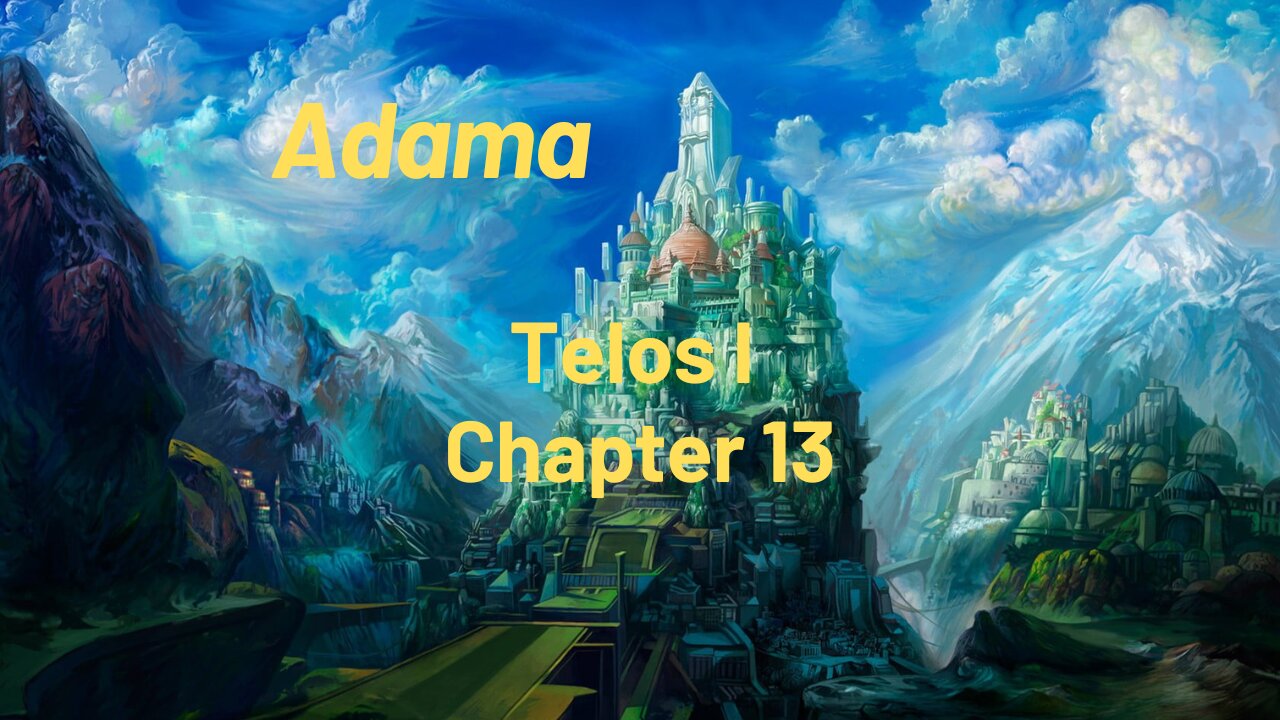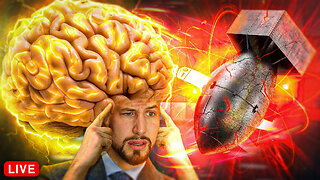Premium Only Content

Adama - Telos I - Chapter 13
Chapter 13 of the book "One from Telos," authored by Adama, delves into a topic that may be challenging for some to accept, yet is considered a crucial point in one's evolutionary journey: pain and suffering. Adama addresses the question of why pain and suffering exist and how they are interconnected with the Law of Action and Reaction, a universal law that states that every energy exerted will have an opposing energy of the same intensity acting in return.
The chapter emphasizes that directing negative energy towards something or someone results in its eventual return, in alignment with this law. While the concept of consequences may not equate to punishments in the same sense as understood on Earth, they are seen as lessons to be learned and understood. Much of the pain and suffering experienced in the present stems from actions in the current lifetime and from past lives, emphasizing the karmic nature of these experiences.
An analogy is drawn to how individuals often revisit and replay their pain and suffering, inadvertently intensifying these emotions. The act of focusing on these negative feelings adds energy to them, either positively or negatively. Positive feelings contribute to growth, while low-vibration emotions such as pain and suffering need healing and modification. Adama stresses that pain and suffering hold lessons to be comprehended, and healing occurs once these lessons are understood.
A central theme of the chapter is the notion that spreading one's pain and suffering to others is counterproductive. Sharing these emotions can lead to the amplification of suffering both in the individual and the recipients of the shared feelings. Pity, a low-vibration emotion, can exacerbate suffering when it is shared with others. Adama questions the motivation behind such sharing and urges individuals to seek healing from within, emphasizing that genuine help comes from the heart.
The chapter emphasizes the importance of introspection and self-responsibility in healing. Adama suggests that individuals keep their pain and suffering to themselves, focusing on inner healing rather than burdening others with their negative emotions. True healing, it is explained, arises from within and involves changing one's thought patterns, actions, and spoken words. The process of evolution is depicted as a means of cleansing accumulated energies over time, leading to inner and outer healing.
The narrative cautions against blaming external forces, such as Father/Mother God, for individual suffering. Instead, it emphasizes that individuals are responsible for the energies they generate and the resulting experiences. The concept of forgiveness is highlighted, extending it to oneself and one's soul for past mistakes. A plea is made to avoid judging one's soul and to embrace self-forgiveness, an essential step in the journey of evolution.
Adama introduces the Temple of Jade Healing in Telos, a place where individuals can seek assistance for emotional, mental, physical, and spiritual healing. The temple is portrayed as a haven for those seeking genuine healing, provided they approach with an open heart and sincere intention. The chapter concludes by emphasizing the importance of surrender, belief, and genuine desire for healing in embarking on a transformative journey towards inner and outer well-being.
-
 15:08
15:08
NinjaGamblers
18 hours ago $0.41 earnedAggressive Fisher's Method at Roulette: How to Win $600 in an Hour
4.44K9 -
 1:12:44
1:12:44
TheDozenPodcast
18 hours agoTerrorist MACHETE attack left me for dead: Tal Hartuv
8.78K3 -
 6:06
6:06
scoutthedoggie
1 day agoAirsoft Warfare Scotland
5.19K1 -
 6:15:31
6:15:31
SpartakusLIVE
13 hours ago#1 BIG BRAIN releases the FULL POWER of his CEREBRAL DOMINANCE
114K10 -
 57:19
57:19
Man in America
20 hours ago🚨 Disaster Expert: Weather Warfare Hasn't Stopped Under Trump—Are You Ready for What's Coming?
65.3K140 -
 1:32:38
1:32:38
elwolfpr
12 hours agoHappy Sunday COD Night: Rumble Stream LIVE!
95.6K9 -
 5:40:13
5:40:13
412 Productions
12 hours ago $6.36 earnedSunday night gaming - 7 Days to Die
59.8K4 -
 2:16:02
2:16:02
Nerdrotic
14 hours ago $19.45 earnedUFO Reality Revealed | New Homos | Jacques Vallée Remote Viewing | Forbidden Frontier #094
80.7K25 -
 1:06:38
1:06:38
Cooking with Gruel
1 day agoCooking with Michael Franzese
37.6K5 -
 16:53
16:53
Chris From The 740
17 hours ago $7.52 earnedMec-Gar Glock Mags Review: Don't Believe The Hype!
59.3K15